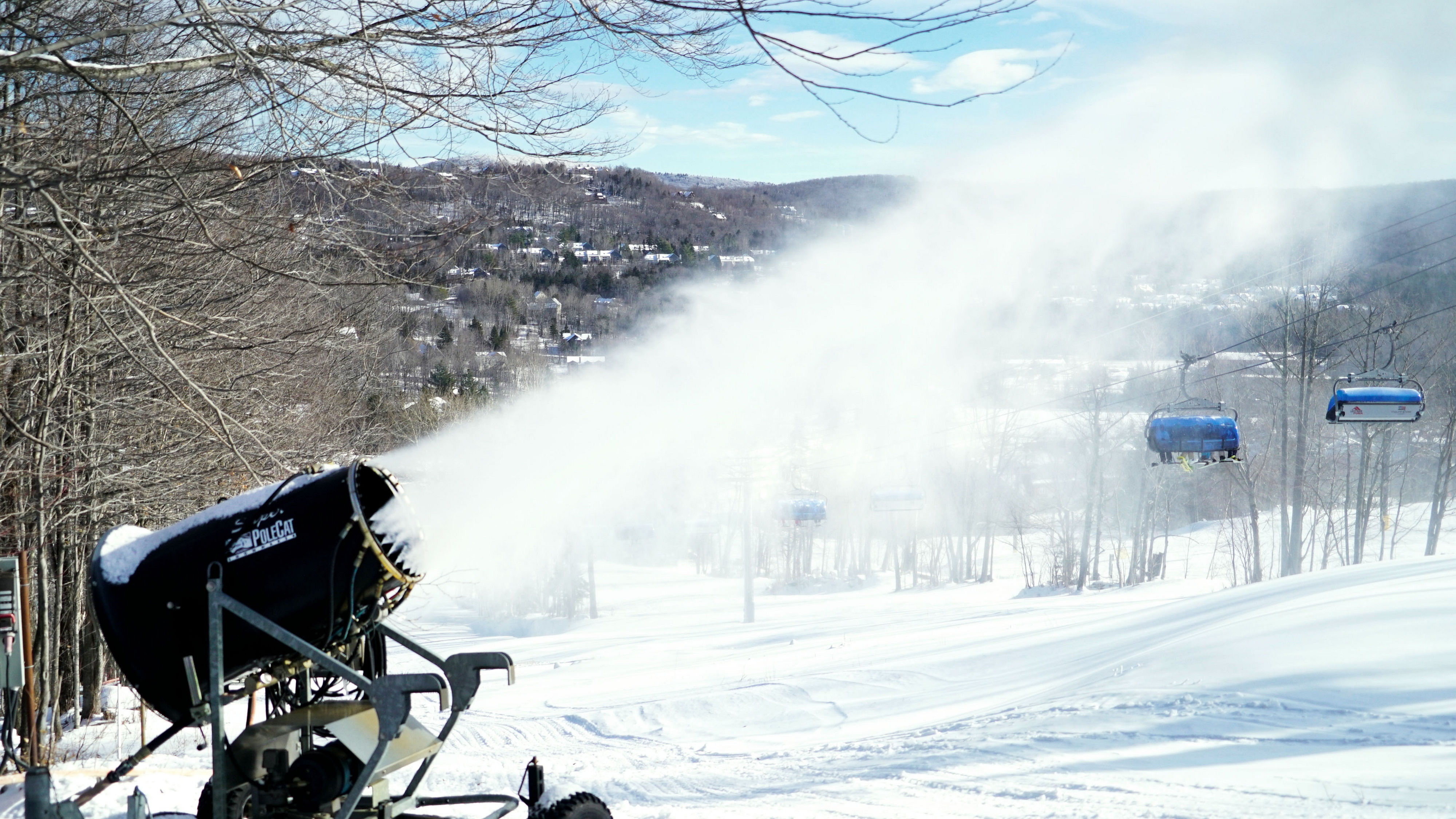Mount Snow, VT
Top PickMassive capacity and early openings — built for consistent early-season coverage.
Notes for Trip PlannersBest pick for consistent early season conditions — excellent for November plans.
Mount Snow isn’t just another Vermont ski resort — it’s become the gold standard for the best snowmaking in the East. If you’ve ever wondered which East Coast ski resorts have the strongest snowmaking, or you’re plotting an early-season skiing adventure back East, this is where things get interesting.
Here’s the full scoop — how Mount Snow built one of the most powerful snowmaking systems in the country, why that matters for your trip, and how it stacks up among top snowmaking ski resorts on the East Coast.
There’s a reason Mount Snow often opens before the rest of the pack. Its snowmaking system is one of the largest in North America and easily among the best on the East Coast.
Translation: even when natural snow is light, Mount Snow can lay down consistent coverage and get skiers on snow early — often weeks ahead of neighboring mountains.
The result? Reliable, skiable terrain even when Mother Nature hasn’t delivered the goods yet.
Bottom line: Mount Snow’s snowmaking makes trip planning easier, less risky, and a whole lot more exciting.
You might be wondering where other snowmaking Vermont ski resorts fit into the picture. Here’s a quick snapshot to help you plan.
Massive capacity and early openings — built for consistent early-season coverage.
Notes for Trip PlannersBest pick for consistent early season conditions — excellent for November plans.
Solid, reliable mid-season coverage across core trails.
Notes for Trip PlannersStrong natural snow record and scenic setting — great for combined nature + skiing trips.
Hybrid natural + artificial systems that stretch the season and preserve surface quality.
Notes for Trip PlannersWell-known for excellent grooming — ideal if you like smooth, predictable runs.
Aggressive early snowmaking focused on quick season openings.
Notes for Trip PlannersClose to NYC — perfect for weekenders who want reliable early-season turns.
Colder northern New England temps extend machine-made coverage windows.
Notes for Trip PlannersGreat option for January powder chasers and long-season skiers.
Note: Snowmaking capacity and opening plans vary year to year. Always check current trail status and opening announcements before you travel.
Many resorts have stepped up their snowmaking game, but Mount Snow remains a leader thanks to its scale, speed, and consistency.
Mount Snow typically announces its opening plans ahead of the curve — perfect for planners who like to lock in trips early.
How warm can it be and still make snow?
It depends on humidity, not just air temperature. If the wet-bulb is low enough, snow can be made even above freezing.
Does artificial snow feel different?
Not much once it’s groomed. In fact, well-made machine snow can create a silky, fast surface.
Why don’t all resorts do this?
Snowmaking infrastructure is a massive investment — Mount Snow prioritized it years ago, which is why it stands out today.
Does natural snow still matter?
Absolutely. Natural snow adds depth and variety, but snowmaking guarantees a base so you can ski no matter what the weather brings.
If you’re looking for the best snowmaking in Vermont and want a resort that starts strong every season, Mount Snow is hard to beat. Its system isn’t just big — it’s smart, fast, and reliable. Plan early. Ski sooner.
